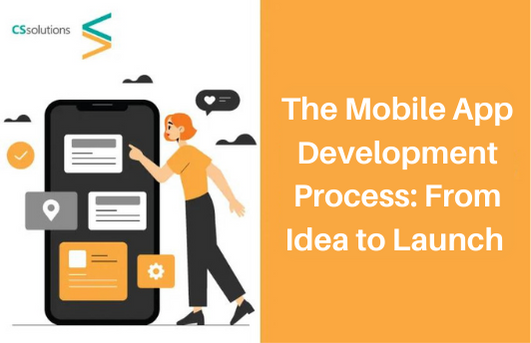The process of developing a mobile app is quite standardized and simple. It involves strategy, design, development, and deployment, much like any other software development project. If you grasp the specifics of the mobile app development process, you will save time and have an overall better experience. We will coach you through the whole process of developing a mobile app, from idea to initial release.
Steps of the Mobile App Development Process
Step 1: Verifying the Concept
Before moving forward, the following issues must be addressed to ensure that you are not adopting the incorrect concept and that the idea is worthwhile for your time and work.
- App objective: What made you decide to create a mobile app? In your company, is it truly necessary? Is your concept suitable or a great fit in light of the needs of your company or target market? Do you have sufficient funding to advertise it?
- Intended audience: Whom are you trying to reach? Who are the likely customers?
- App USP: What are the key features of the app? What draws users to your app in particular? What makes your app appealing to your audience? How will you distinguish?
- Competitor analysis: Who are your rivals? Do they have a comparable application? If so, is your method of solving the problem better than theirs?
- App investment: You must invest time, money, and effort into developing any app. Have you prepared?
Step 2: Market Investigation
Market research reveals the actual demand or interest of the market. As a result, you can change your concept, and the study may provide you with a precise list of criteria that will aid you in prioritizing the assignment. Furthermore, here is the review of the entire market research procedure done by our mobile app development Mississauga company:
- Define your objective and customer persona.
- Prepare your research survey questions
- Identify a portion of that persona to engage.
- Speak to people in your target customers’ business.
- Keep the survey informative.
- List your market competitors and do desk surveys as well.
Step 3: Create the Wireframe for Your App
A wireframe can be presumed as your application’s design plan. It will highlight the functionality and design of your app. Also, it will aid in your understanding of how the program functions and looks.
Wireframes for apps essentially provide the team with a theory to work from. Additionally, if you need ideas for developing your app’s wireframe, here are some steps to consider.
a) Create a user flow Map
The user flow map is crucial at first since these stages are necessary for your program to accomplish a particular objective. Let’s examine the steps:
- Establish a mobile frame: Using a frame that matches the specifications of the real gadget you are designing is preferable.
- Implement design patterns: Applying native UX/UI design patterns for iOS and Android might make it easier for designers to create a recognizable user experience.
- Check whether your content scales: Start with medium screen size when wireframing; it’s crucial to verify how your material appears on the other sizes and modify it accordingly.
b) Design sprints may bring order to the design chaos
A Design Sprint is a tried-and-true scientific method of group brainstorming that assists in determining which features to construct first and which ones to drop. Establishing concepts and laying the foundation for wireframing and UX/UI designing helps to cut down on development time and costs.
Whether it is mobile app development in Mississauga, UX/UI design, or app maintenance, CS Web Solutions experts are here to deliver the best results at competitive pricing.
Step 4: Choose a Platform
We’ll now help you choose the ideal platform for your mobile app development phase. Throughout the development process, there are three options:
- Native App: Programmers may create native apps for certain operating systems such as Android and iOS by using programming languages and tools.
- Cross-Platform/Hybrid App: A single mobile HTML5 app that can run on many platforms. They are available in all app stores.
- HTML5 Web App: These are mobile websites designed to operate on mobile browsers and give the impression of being native applications. Furthermore, this online application has a superior user interface and functionality independent of platforms.
Step 5: Development
Producing a mobile app involves various tasks, including setting up a suitable development environment, writing various sections of code, doing preliminary testing, and developing a mobile application that can be installed and tested.
Programming and development environment configuration would be needed for the project. Each software typically has three components: a back end, APIs, and a front end. As development is often done in stages, you may anticipate your developer to provide you interim versions that you can run directly on your device.
Step 6: Modify Your App After Testing
Following a code review procedure throughout development ensures that no significant flaws need to be fixed. After your application is aesthetically pleasing and completely functioning, it’s time to do one more usability test with your coworkers. In this step, you can make the last adjustments to your product.
Step 7: Launching Your App
You created, tested, and created your application’s structure. Certainly, now is the time to launch it on any app play store. The development of a mobile app requires support and app maintenance once it is launched, which increases your return on investment.
Conclusion
Now you know the key steps involved in a mobile app development process. Thanks to the outline above, you now understand how to create a mobile app and what to anticipate from your development firm. Furthermore, contact our app development Mississauga company if you need any clarification on app maintenance and how to design a mobile app.
For mobile app development in Mississauga, contact seasoned developers at CS Web Solutions. Contact us today!

